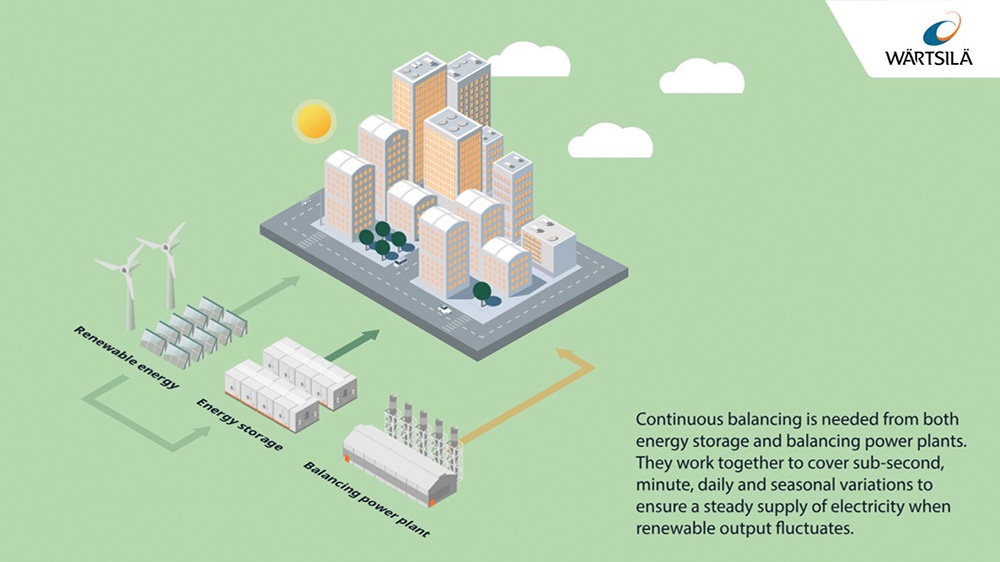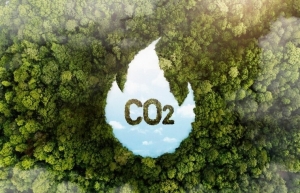It’s now or never to meet climate goals - and every second counts
The urgency of the situation is unequivocal, and the solution is equally clear: We need to triple renewable energy and require a seismic change in the level of investment - up to $5.7 trillion per year by 2030 - to put us on course for the Paris Agreement scenario.
 |
| Nicolas Leong, Director, North & Southeast Asia, Wärtsilä Energy |
The final quarter of this year, as we build up to COP28, is a critical moment to shift our focus from targets to implementation at pace.
However, renewables alone are not enough to deliver the change we need. To enable wind and solar to thrive, we need to build flexible energy systems that are reliable and affordable. We cannot delay any longer.
Wasting renewable energy
Around the world, renewables are quickly becoming the most competitive source of electricity generation. Setting ambitious renewable energy targets and deploying wind and solar at scale is essential to enabling rapid decarbonisation.
However, there is a possibility of missing out trillions of dollars investment into wind and solar if we continue to add inflexible assets in the power system.
For generations, we have been reliant upon traditional, inflexible power plants, such as coal and combined-cycle gas turbines (CCGT) to provide baseload power for our electricity grids. These traditional power systems now need to adapt, as renewable energy is expected to meet 35 per cent of global power generation by 2025.
In Vietnam, variable renewable energy is expected to meet more than 30 per cent of the total power generation by 2030.
As wind and solar power is intermittent, running them alongside inflexible baseload power plants, which cannot quickly ramp up and down to match the changing levels of renewable energy, can create significant issues, such as instability or unreliability for our power systems. As the level of renewable energy on our grids increases in the coming years, a large share of these inflexible power plants will become obsolete, uneconomical stranded assets in our power system.
Renewable energy usually ranks first in the dispatch order in any power system due to their low marginal cost. This will have a big impact on conventional power plants that normally operate as a baseload.
For example, in Vietnam, the priority to dispatch renewable energy (installed capacity of 21.6 GW, accounting for 27 per cent of total system capacity) has been impacting many CCGT power plants. Some of these baseload plants have to perform daily starts and stops, up to 230 times in just four months. This has increased the fuel consumption, maintenance costs, and the frequency of unit breakdown of these inflexible technologies.
We therefore need to combine the build out of renewables, with a substantial increase in flexible capacity such as grid balancing engines and energy storage systems, which can quickly ramp up and down to support wind and solar power.
Because this flexible capacity can respond to sudden changes in demand and supply, it can also serve as different ancillary services in the grid. This includes frequency control, maintaining the stability and reliability of the grid, preventing blackouts and power disruptions.
Flexibility is not an option but an essential part of our high renewable power systems. If we fail to increase the flexibility at scale, it will threaten our ability to provide affordable and reliable electricity to industry, homes and businesses – while missing out on our decarbonisation targets.
Building affordable systems
Wärtsilä has studied and modelled over 190 energy systems around the world, using energy simulation software. We have found that anywhere in the world, the most cost-effective approach to reach full renewable energy is to combine renewable energy sources with flexibility in the form of grid balancing engines and energy storage.
These solutions offer high levels of dispatchability and can ramp up and down quickly in any conditions. This setup delivers reliable renewables at a low levelised cost of electricity (LCOE), making clean energy affordable for all.
For example, according to the latest modelling work by Wärtsilä for Vietnam, by investing in renewable-based power systems backed by grid balancing engines and energy storage, Vietnam would be able to reach net-zero by 2050, cut its LCOE by 20 per cent, and avoid nearly $28 billion per year in forecasted carbon taxes.
The path to net-zero is not linear, and the last few years have demonstrated that we cannot see exactly what is around the corner. Therefore, policymakers must establish market conditions and policies to enable us to build flexibility into power systems today and ensure they’re adaptable for tomorrow.
The balancing of renewables requires both energy storage and grid balancing power plants. They work together to cover sub-second, minute, daily, and seasonal variations and ensure a steady supply of electricity when renewable output fluctuates.
Grid balancing engine technology can also be converted to run on hydrogen and other sustainable fuels in the future. These include fuels produced from excess wind and solar energy, to enable a closed loop, fully renewable power system and avoid stranded assets.
Such flexible engine technology is the optimal choice to supporting our increasingly renewables power systems compared to alternatives like gas turbines. This is because they can quickly ramp up and down an unlimited number of times per day, are highly efficient at any output and can maintain efficiency and power output at different loads and at high ambient conditions. That means they can better address the variability of renewable energy to match the electricity demand of the grid.
 |
Principles for a flexible future
Based on our modelling and expertise, Wärtsilä has outlined three crucial principles for policymakers and the wider energy industry to follow when designing our future power systems.
Firstly, we need to ensure that we are choosing the right technologies. The build out of wind and solar energy must be matched with flexible grid balancing engines and energy storage to ensure the optimal, lowest cost power mix.
Secondly, we must design our energy markets to support flexibility – for example introducing capacity payment and developing an ancillary services market to ensure developers receive a return on their investment, even if a plant runs only intermittently with short hours to balance demand.
There should be proper market mechanisms for the procurement, utilisation, and compensation of ancillary services. Assigning a real price to ancillary services and subjecting these services to competitive bidding will increase incentives for generators to make such services available and to invest in flexible technologies.
And finally, we should introduce shorter trading and dispatch intervals, such as using a 15-minute or even 5-minute time resolution in the power market trading instead of 30-minute intervals to quickly respond to the imbalance. The procurement of energy and ancillary services should be co-optimised to ensure the lowest total system costs.
In 1896, a seminal paper by Swedish scientist Svante Arrhenius first predicted that changes in atmospheric carbon dioxide levels could substantially alter the surface temperature through the greenhouse effect. Over 120 years later, we still haven’t been able to stop levels from rising.
Our window to reduce emissions and keep our planet habitable is closing. We have the technologies, expertise, and finance available now to create a greener future and there is no time to waste: every second counts.
 | COP28 faces debate over controversy-mired carbon credits Controversial credits bought by corporations to offset their carbon emissions will be in the spotlight at UN climate talks next month. |
What the stars mean:
★ Poor ★ ★ Promising ★★★ Good ★★★★ Very good ★★★★★ Exceptional
Related Contents
Latest News
More News
- Heavy industries set for pilot greenhouse gas quotas (December 25, 2025 | 10:00)
- Swedfund invests in MSME growth and climate action in Vietnam (December 19, 2025 | 11:42)
- GreenYellow brings solar energy to light up remote schools in Tuyen Quang province (December 19, 2025 | 08:00)
- Charge+, Grab partner to develop EV charging network in Vietnam (December 18, 2025 | 17:11)
- Linking sci-tech and innovation to Vietnam’s net-zero future (December 18, 2025 | 14:31)
- Driving double-digit growth through green and circular transformation in Vietnam (December 17, 2025 | 09:00)
- Standard Chartered and ACCA deepen collaboration to develop Vietnam’s talent for a sustainable future (December 15, 2025 | 18:18)
- Schaeffler reports strong early output from Dong Nai solar project (December 12, 2025 | 15:16)
- Forestry conference highlights biodiversity and sustainability goals (December 09, 2025 | 13:35)
- Home Credit honoured among top 10 sustainable companies in trade and services (December 09, 2025 | 12:18)

 Tag:
Tag:



















 Mobile Version
Mobile Version